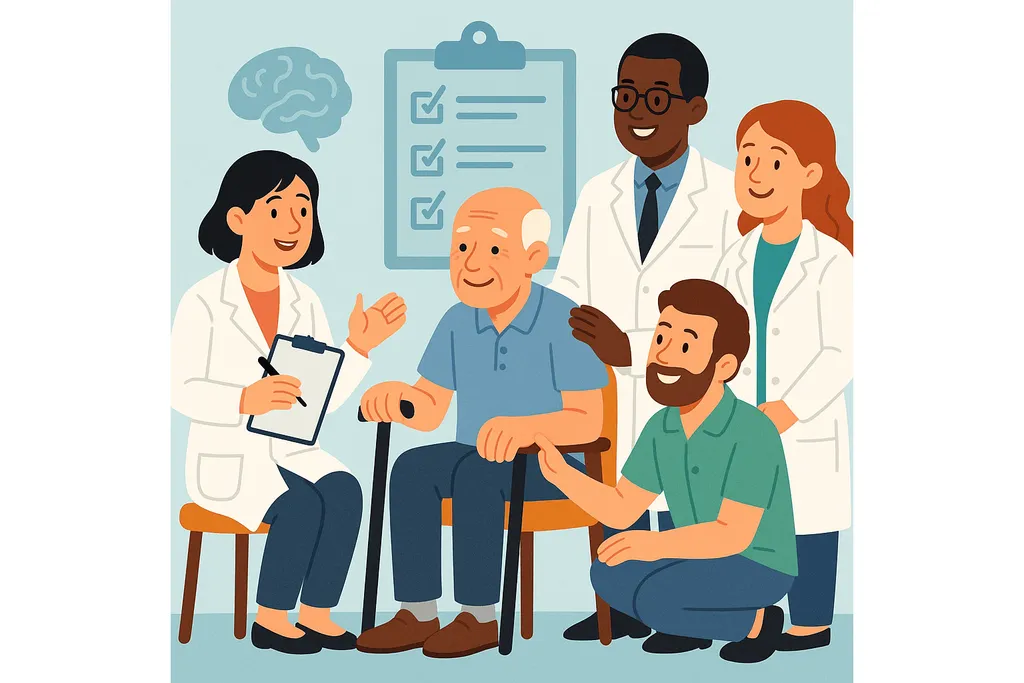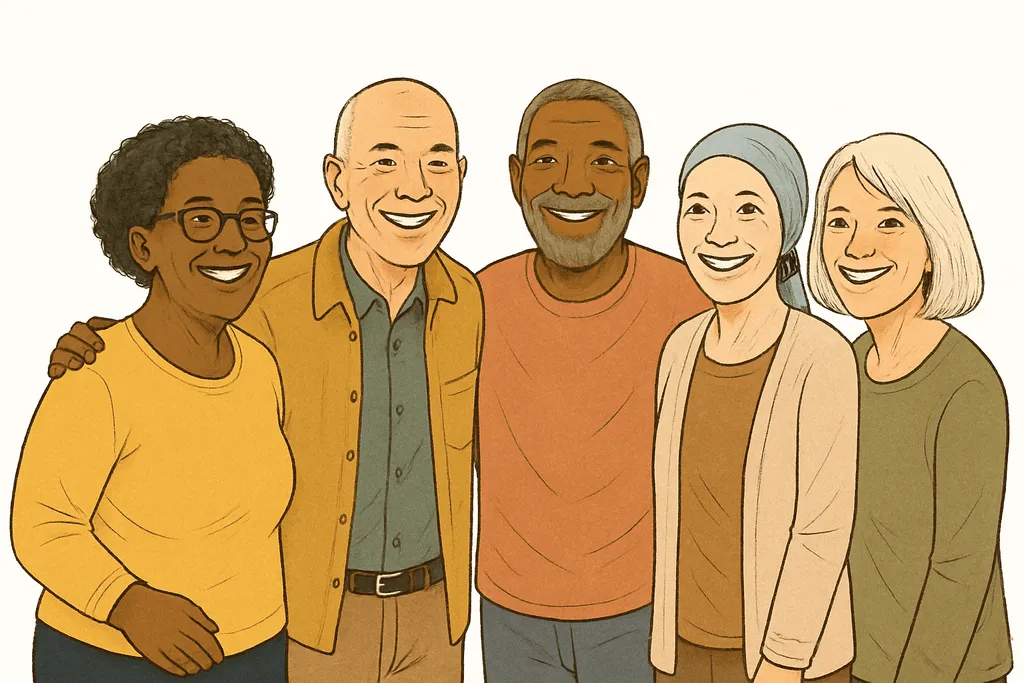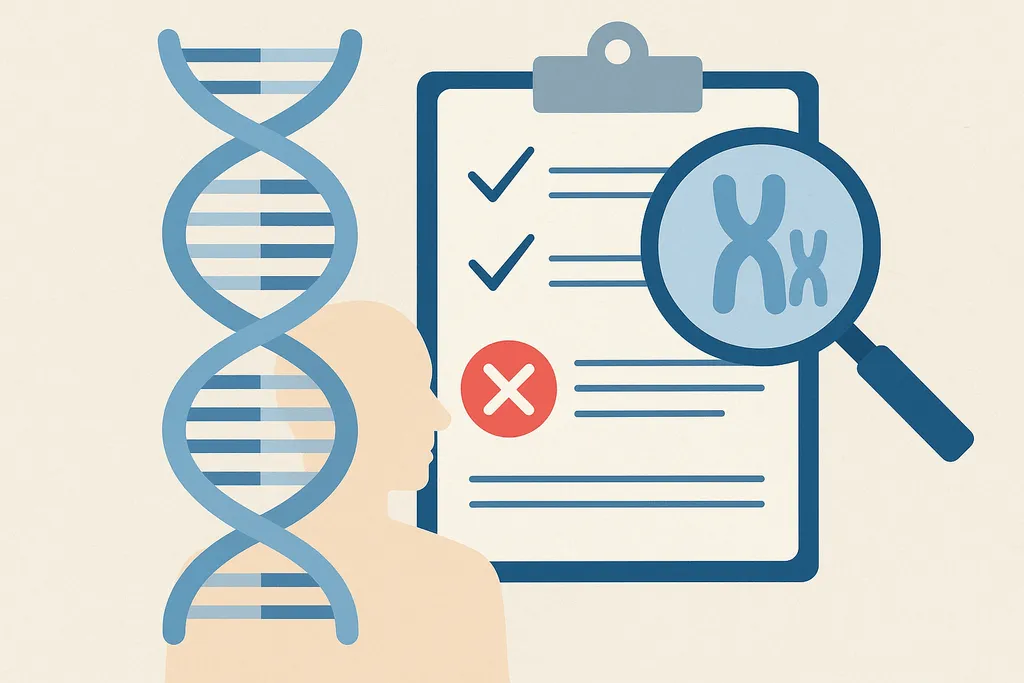Myeloma Round Table: Studies from the American Society of Hematology Meeting (ASH 2021), January 22, 2022

The annual American Society of Hematology (ASH) meeting is the most important of the year for myeloma researchers and clinicians. It is a time to learn about the latest research and it is a forum for novice and experts alike to share their ideas. One sign of the progress being made in myeloma is the number of talented, young specialists coming into the myeloma field and presenting important studies.
Drs. Francesco Maura from the Sylvester Cancer Center at the University of Miami, Timothy Schmidt from the Carbone Cancer Center at the University of Wisconsin in Madison, and Sigrun Thorsteinsdottir from the University of Iceland who is currently practicing at Rigshopitalet in Copenhagen, Denmark are three of the brightest young minds in myeloma. In this Myeloma Round Table from January 22, 2022, they discuss their presentations on precursor conditions, the myeloma microenvironment, applications of minimal residual testing (MRD), and chromosome one abnormalities, other ASH studies, and their views of what the present and future of myeloma hold for patients.
Moderated Discussion
- Introduction of panelists
- 3:42 - Question 1: Let’s get started with some background on your studies. I’d like to ask all three of you to take about five minutes each to summarize, as best you can, for our lay audience, their studies, what where the main points for patients to take home, and what do they mean for the future. That’s a lot to get into five minutes, so if you have more, we’ll have time during the discussion. Let’s go generally by topic. I’d like to start with Dr. Thorsteinsdottir, then go to Dr. Maura, and then Dr. Schmidt.
- 4:24 - Dr. Thorsteinsdottir: iStopMM study is a nationwide study in Iceland; more than 75,000 Icelanders over the age of 40 have been screened for myeloma precursor conditions (51% of target population)
- Is it better to treat myeloma earlier, before there is organ damage?
- Some studies suggest it might be beneficial to treat some smoldering myelomas
- 3,700 of those screened had MGUS; they were randomized into three groups for clinical trail (arm 1: monitored by system; arm 2: follow IMW guidelines; arm 3: more intensive follow-up), does earlier treatment matter?
- Not able to determine if there is a screening population
- 0.5 of population had smoldering myeloma, offered treatment in clinical trial
- Lenalidomide and dexamethasone for intermediate risk; len, dex and Darzalex (daratumumab) for high-risk
- About 40 had active myeloma, 180 with smoldering
- Trial will have years-long followup
- “It is important to treat early, and I think we’ll probably be doing it more in the future. We just need to identify the right candidates for it.”
- Earlier diagnosis would likely mean less organ damage
- 13:43 - Question 2: Why does the microenviroment to the disease and how does your work with MRD testing intersect with it?
- 14:03- Dr. Maura: We presented two ASH studies on the microenvironment, one on progression and another on sustained MRD negativity (minimal residual disease)
- Instead of looking only at genetics, these studies look at both microenvironment and how genetics affects all parts of it through next generation sequencing (NGS) to identify myeloma generating events
- What matters for myeloma matters in the microenvironment
- Some associations important to outcomes in differing microenviroments
- Matters to therapy selection, issues like toxicity, long-term effects
- Personalizing medicine has many obstacles
- What is the real target?
- Combining large data sets is essential to finding answers
- Need to change our approach in defining risk because of rapid changes
- 14:03- Dr. Maura: We presented two ASH studies on the microenvironment, one on progression and another on sustained MRD negativity (minimal residual disease)
- 26:35 - Question 3: Dr. Schmidt please go into your studies findings on chromosome 1 in myeloma.
- 26:49 - Dr. Schmidt: Understanding specific genetics is the future.
- Current chromosome abnormalities are normally determined by FISH tests
- Chromosome 1 abnormalities are common in myeloma, but how important are they?
- Loss of 1q may be associated with higher risk, but difficult to tell with current tests
- Post-hoc analysis of large study to determine of replacing Velcade in VRd (Velcade, Revlimid, dexamethasone) with Kyprolis/carfilzomib (KRd), looking only at those with chromosome 1 abnormalities
- Primary study showed no significant difference between the two, but was Kyrpolis better for those with high-risk disease
- +1q seem so have less progress free survival, some might have benefitted but numbers are too small
- Chromosome 1 abnormalities benefit from transplant and more aggressive therapy (up to 40% of patient have these abnormalities); patients should be more interested in clinical trials
- Number of copies is an important factor for risk
- 37:00 - Question 4: What were some of the other ASH studies that you saw that excited you?
- 38:17 - Dr. Schmidt: “We’re in a Renaissance of new treatments, most of which seem to be effective.”
- The big question is how to use immunotherapies to prolong survival
- In newly diagnosed myeloma, what is the right drug therapy to provide longest responses; 5, 7, 10 years in remission will be more common
- Moving away from “one size fits all” approach
- Treatment-free intervals for some patients
- 38:17 - Dr. Thorsteinsdottir: “I work in a different health care system where we get things a little later, I think.”
- Europe had different up-front options than U.S.
- VRd is standard treatment, but hope that other treatment will “move up” to newly diagnosed
- Very impressed with bispecifics and CAR T
- It’s difficult to predict costs
- Flow cytometry study that could identify MGUS type that would not progress
- Peripheral blood cells using flow cytometry
- 46:29 - Dr. Maura: MASTER trial lead by Luciano Costa at the University of Alabama at Birmingham is the “right approach”
- Stopping treatment after successful remission more possible
- “If you have sustained MRD-, you can stop maintenance.”
- 48:16 - Dr. Schmidt: MASTER study first of its kind to use MRD to determine if patients could stop therapy; not all cancers have indefinite therapy
- 50:35 - Dr. Maura: More than half of ASH myeloma studies were immunotherapy-related
- Trials must better reflect actual population to be more effective
- Definition of high-risk is always changing
- 53:35 - Dr. Thorsteinsdottir: Danish and Swedish registries demonstrate that less than half of patients are eligible for clinical trials
Audience Questions & Answers
- 0:30 - For Dr. Thorsteinsdottir: Do you collect stem cells from smoldering myeloma patients before they become active?
- 1:00 - Re: high-risk smoldering myeloma patient with additional risk factor of AML. Since lenalidomide has risk of secondary cancers, what are alternatives? (Discussion of faculty goes into wide-ranging discussion on risk.)
- 13:29 - For the 1q population, have you seen any treatments that are preferable or more effective?
- 16:52 - Do targets for bispecifics have a risk of developing second cancers?
- 20:12 - Should offspring of myeloma patients be screened for the disease?
- 21:35 - Can you address 1q gain and IGh rearrangements?
- 23:12 - Please address 17p deletion.
- 27:00 - For patients who did not have a four-drug induction and had a stem cell transplant, would adding daratumumab (Darzalex) to maintenance make sense?
- 33:16 - What is the role of venetoclax for t 11;14 patients in the light of early studies that showed toxicities in myeloma patients?
- 35:45 - When you have a high-risk marker, do you always have it?
Thanks to our sponsors

The annual American Society of Hematology (ASH) meeting is the most important of the year for myeloma researchers and clinicians. It is a time to learn about the latest research and it is a forum for novice and experts alike to share their ideas. One sign of the progress being made in myeloma is the number of talented, young specialists coming into the myeloma field and presenting important studies.
Drs. Francesco Maura from the Sylvester Cancer Center at the University of Miami, Timothy Schmidt from the Carbone Cancer Center at the University of Wisconsin in Madison, and Sigrun Thorsteinsdottir from the University of Iceland who is currently practicing at Rigshopitalet in Copenhagen, Denmark are three of the brightest young minds in myeloma. In this Myeloma Round Table from January 22, 2022, they discuss their presentations on precursor conditions, the myeloma microenvironment, applications of minimal residual testing (MRD), and chromosome one abnormalities, other ASH studies, and their views of what the present and future of myeloma hold for patients.
Moderated Discussion
- Introduction of panelists
- 3:42 - Question 1: Let’s get started with some background on your studies. I’d like to ask all three of you to take about five minutes each to summarize, as best you can, for our lay audience, their studies, what where the main points for patients to take home, and what do they mean for the future. That’s a lot to get into five minutes, so if you have more, we’ll have time during the discussion. Let’s go generally by topic. I’d like to start with Dr. Thorsteinsdottir, then go to Dr. Maura, and then Dr. Schmidt.
- 4:24 - Dr. Thorsteinsdottir: iStopMM study is a nationwide study in Iceland; more than 75,000 Icelanders over the age of 40 have been screened for myeloma precursor conditions (51% of target population)
- Is it better to treat myeloma earlier, before there is organ damage?
- Some studies suggest it might be beneficial to treat some smoldering myelomas
- 3,700 of those screened had MGUS; they were randomized into three groups for clinical trail (arm 1: monitored by system; arm 2: follow IMW guidelines; arm 3: more intensive follow-up), does earlier treatment matter?
- Not able to determine if there is a screening population
- 0.5 of population had smoldering myeloma, offered treatment in clinical trial
- Lenalidomide and dexamethasone for intermediate risk; len, dex and Darzalex (daratumumab) for high-risk
- About 40 had active myeloma, 180 with smoldering
- Trial will have years-long followup
- “It is important to treat early, and I think we’ll probably be doing it more in the future. We just need to identify the right candidates for it.”
- Earlier diagnosis would likely mean less organ damage
- 13:43 - Question 2: Why does the microenviroment to the disease and how does your work with MRD testing intersect with it?
- 14:03- Dr. Maura: We presented two ASH studies on the microenvironment, one on progression and another on sustained MRD negativity (minimal residual disease)
- Instead of looking only at genetics, these studies look at both microenvironment and how genetics affects all parts of it through next generation sequencing (NGS) to identify myeloma generating events
- What matters for myeloma matters in the microenvironment
- Some associations important to outcomes in differing microenviroments
- Matters to therapy selection, issues like toxicity, long-term effects
- Personalizing medicine has many obstacles
- What is the real target?
- Combining large data sets is essential to finding answers
- Need to change our approach in defining risk because of rapid changes
- 14:03- Dr. Maura: We presented two ASH studies on the microenvironment, one on progression and another on sustained MRD negativity (minimal residual disease)
- 26:35 - Question 3: Dr. Schmidt please go into your studies findings on chromosome 1 in myeloma.
- 26:49 - Dr. Schmidt: Understanding specific genetics is the future.
- Current chromosome abnormalities are normally determined by FISH tests
- Chromosome 1 abnormalities are common in myeloma, but how important are they?
- Loss of 1q may be associated with higher risk, but difficult to tell with current tests
- Post-hoc analysis of large study to determine of replacing Velcade in VRd (Velcade, Revlimid, dexamethasone) with Kyprolis/carfilzomib (KRd), looking only at those with chromosome 1 abnormalities
- Primary study showed no significant difference between the two, but was Kyrpolis better for those with high-risk disease
- +1q seem so have less progress free survival, some might have benefitted but numbers are too small
- Chromosome 1 abnormalities benefit from transplant and more aggressive therapy (up to 40% of patient have these abnormalities); patients should be more interested in clinical trials
- Number of copies is an important factor for risk
- 37:00 - Question 4: What were some of the other ASH studies that you saw that excited you?
- 38:17 - Dr. Schmidt: “We’re in a Renaissance of new treatments, most of which seem to be effective.”
- The big question is how to use immunotherapies to prolong survival
- In newly diagnosed myeloma, what is the right drug therapy to provide longest responses; 5, 7, 10 years in remission will be more common
- Moving away from “one size fits all” approach
- Treatment-free intervals for some patients
- 38:17 - Dr. Thorsteinsdottir: “I work in a different health care system where we get things a little later, I think.”
- Europe had different up-front options than U.S.
- VRd is standard treatment, but hope that other treatment will “move up” to newly diagnosed
- Very impressed with bispecifics and CAR T
- It’s difficult to predict costs
- Flow cytometry study that could identify MGUS type that would not progress
- Peripheral blood cells using flow cytometry
- 46:29 - Dr. Maura: MASTER trial lead by Luciano Costa at the University of Alabama at Birmingham is the “right approach”
- Stopping treatment after successful remission more possible
- “If you have sustained MRD-, you can stop maintenance.”
- 48:16 - Dr. Schmidt: MASTER study first of its kind to use MRD to determine if patients could stop therapy; not all cancers have indefinite therapy
- 50:35 - Dr. Maura: More than half of ASH myeloma studies were immunotherapy-related
- Trials must better reflect actual population to be more effective
- Definition of high-risk is always changing
- 53:35 - Dr. Thorsteinsdottir: Danish and Swedish registries demonstrate that less than half of patients are eligible for clinical trials
Audience Questions & Answers
- 0:30 - For Dr. Thorsteinsdottir: Do you collect stem cells from smoldering myeloma patients before they become active?
- 1:00 - Re: high-risk smoldering myeloma patient with additional risk factor of AML. Since lenalidomide has risk of secondary cancers, what are alternatives? (Discussion of faculty goes into wide-ranging discussion on risk.)
- 13:29 - For the 1q population, have you seen any treatments that are preferable or more effective?
- 16:52 - Do targets for bispecifics have a risk of developing second cancers?
- 20:12 - Should offspring of myeloma patients be screened for the disease?
- 21:35 - Can you address 1q gain and IGh rearrangements?
- 23:12 - Please address 17p deletion.
- 27:00 - For patients who did not have a four-drug induction and had a stem cell transplant, would adding daratumumab (Darzalex) to maintenance make sense?
- 33:16 - What is the role of venetoclax for t 11;14 patients in the light of early studies that showed toxicities in myeloma patients?
- 35:45 - When you have a high-risk marker, do you always have it?
Thanks to our sponsors


about the author
Greg Brozeit
Greg Brozeit has been with the HealthTree Foundation since 2015 when he began volunteering for the Myeloma Crowd. Prior to that he worked with Dr. Bart Barlogie and the International Myeloma Foundation, inaugurating many myeloma patient advocacy and education programs.
More on HealthTree Programs
Trending Articles




Get the Latest Multiple Myeloma Updates, Delivered to You.
By subscribing to the HealthTree newsletter, you'll receive the latest research, treatment updates, and expert insights to help you navigate your health.
















